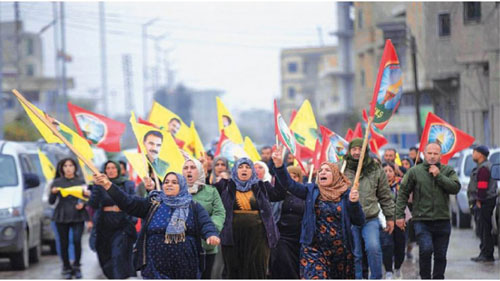In the Syrian Kurdish city of Kobane, gripped by fear of a Turkish offensive, Saleh Abdo Khalil passes an open-air “museum” of buildings reduced to rubble.
“Daesh destroyed these buildings,” the local baker said, using an acronym for the militant Islamic State (IS) group.
That danger has passed, but now, he says: “Turkiye wants to destroy the rest of the city.”
Since Sunday, Turkiye has carried out air strikes against the semi-autonomous Kurdish zones in north and north-eastern Syria, and across the border in Iraq.
Those raids, which started in Kobane, have killed 58 Kurdish fighters and Syrian soldiers as well as a Kurdish journalist, the Syrian Observatory for Hu-man Rights said.
Ankara has threatened a ground offensive and made clear that Kobane, also known as Ayn Al Arab, would be a primary objective.
US-supported Syrian Democratic Forces (SDF), now the Kurds’ de facto army in the area, led the battle that dislodged IS fighters from the last scraps of their Syrian territory in 2019.
Years before, in 2015, Kurdish forces drove the militants from Kobane, on the border with Turkiye and the city became a symbol of their victory against IS.
To keep the memories of the combat alive, Kurdish authorities erected a cordon around a group of destroyed buildings, burnt-out vehicles and missile remnants, dubbing the area the Kobane “museum”.
‘People don’t sleep at night’ While the football World Cup in Qatar has captured some residents’ attention, tension can be read on their faces.
Most fled the combat with IS before slowly re-turning and rebuilding. “We fought IS for the whole world, and today the world closes its eyes and acts like an ostrich while Turkiye bombs,” said baker Khalil, 42. One week after a bombing in Istanbul on Nov 13 that killed six people and wounded 81, An-kara said it launched air strikes from “70 planes and drones” against Kurdish bases in Iraq and Syria, starting with Kobane. —AFP










